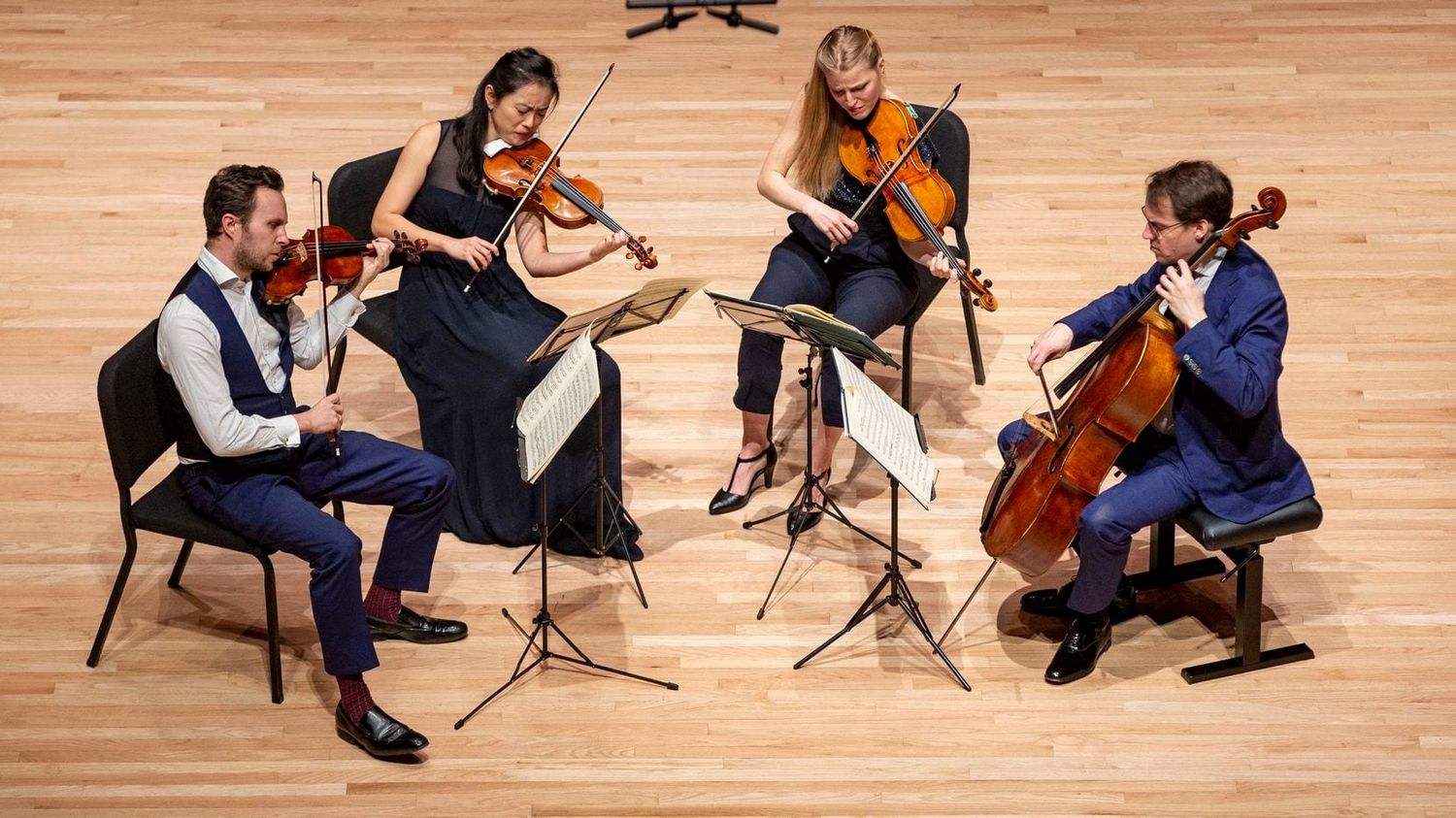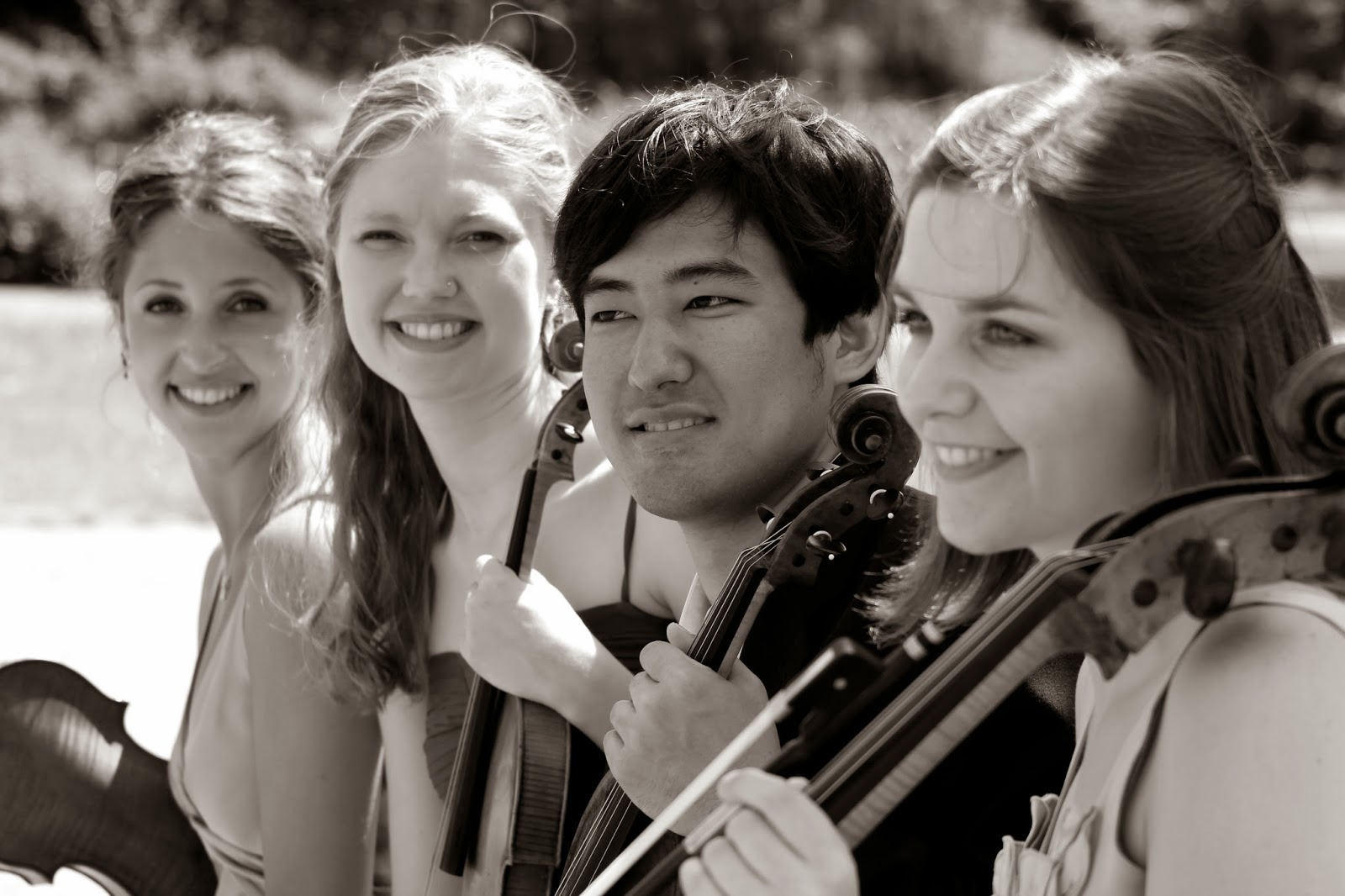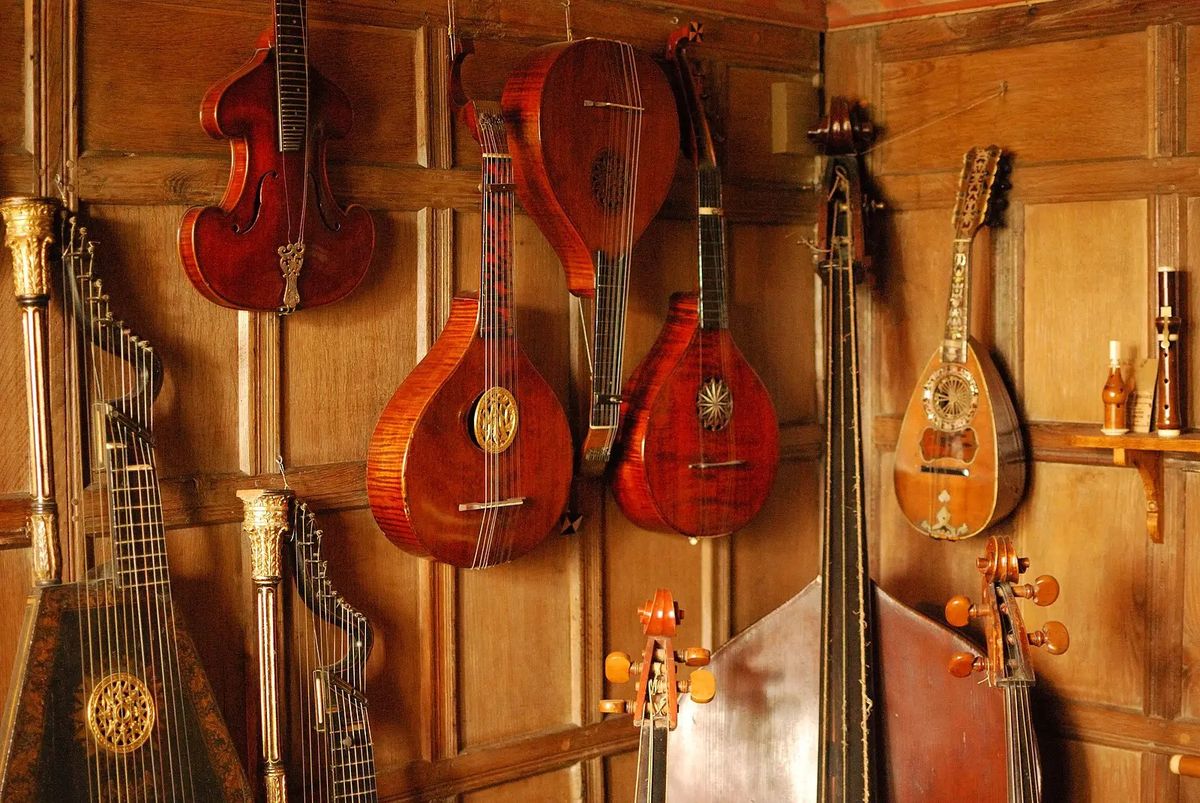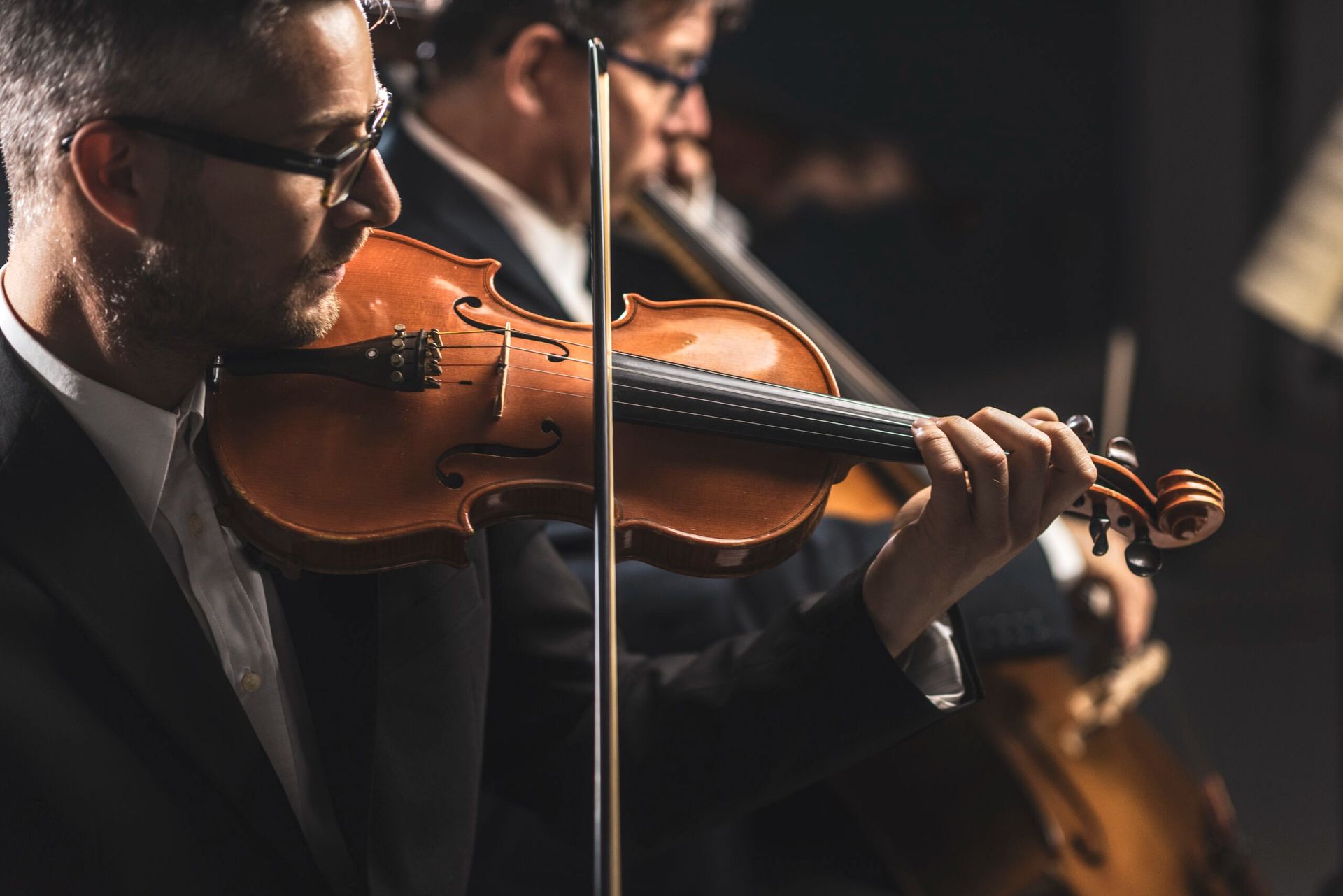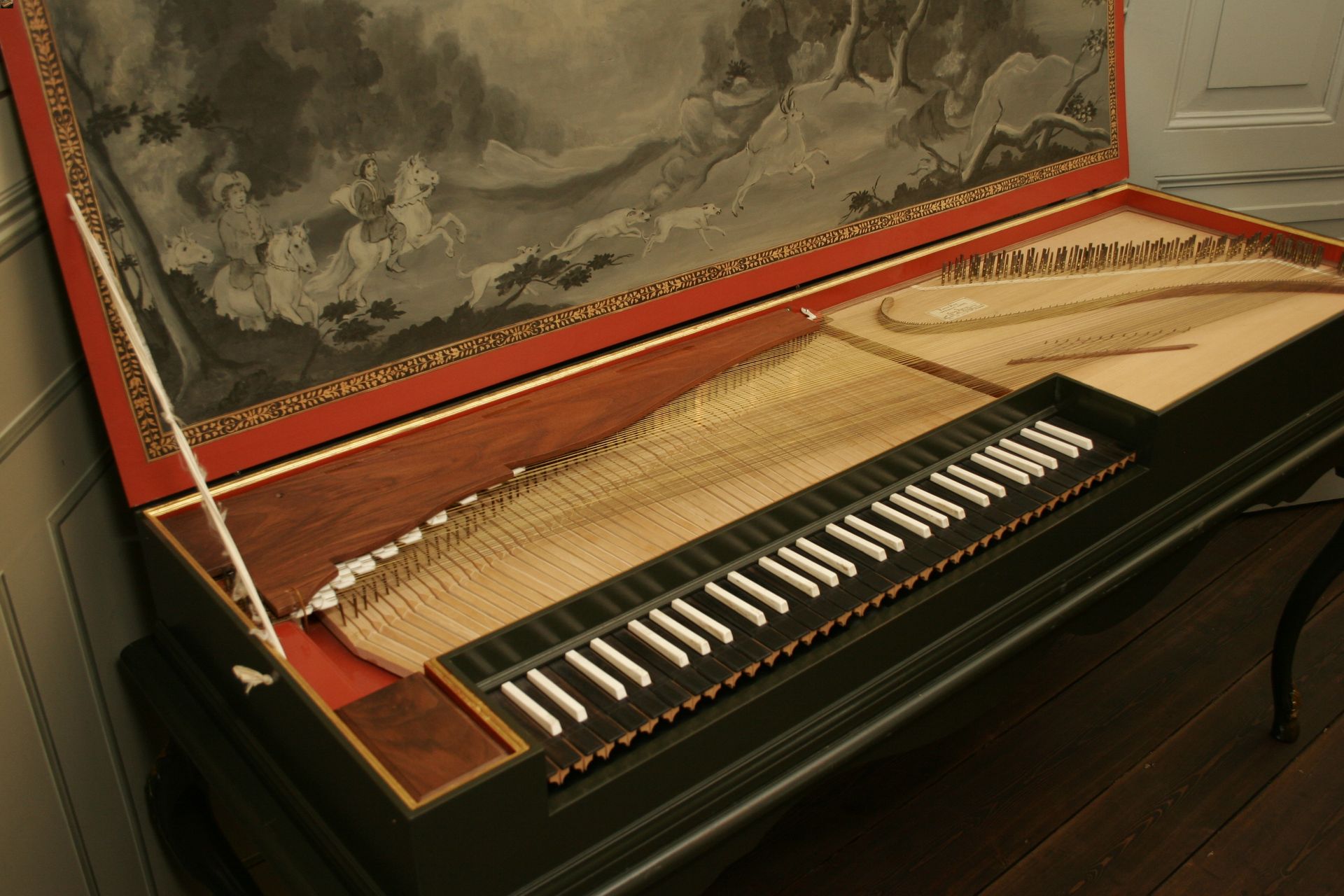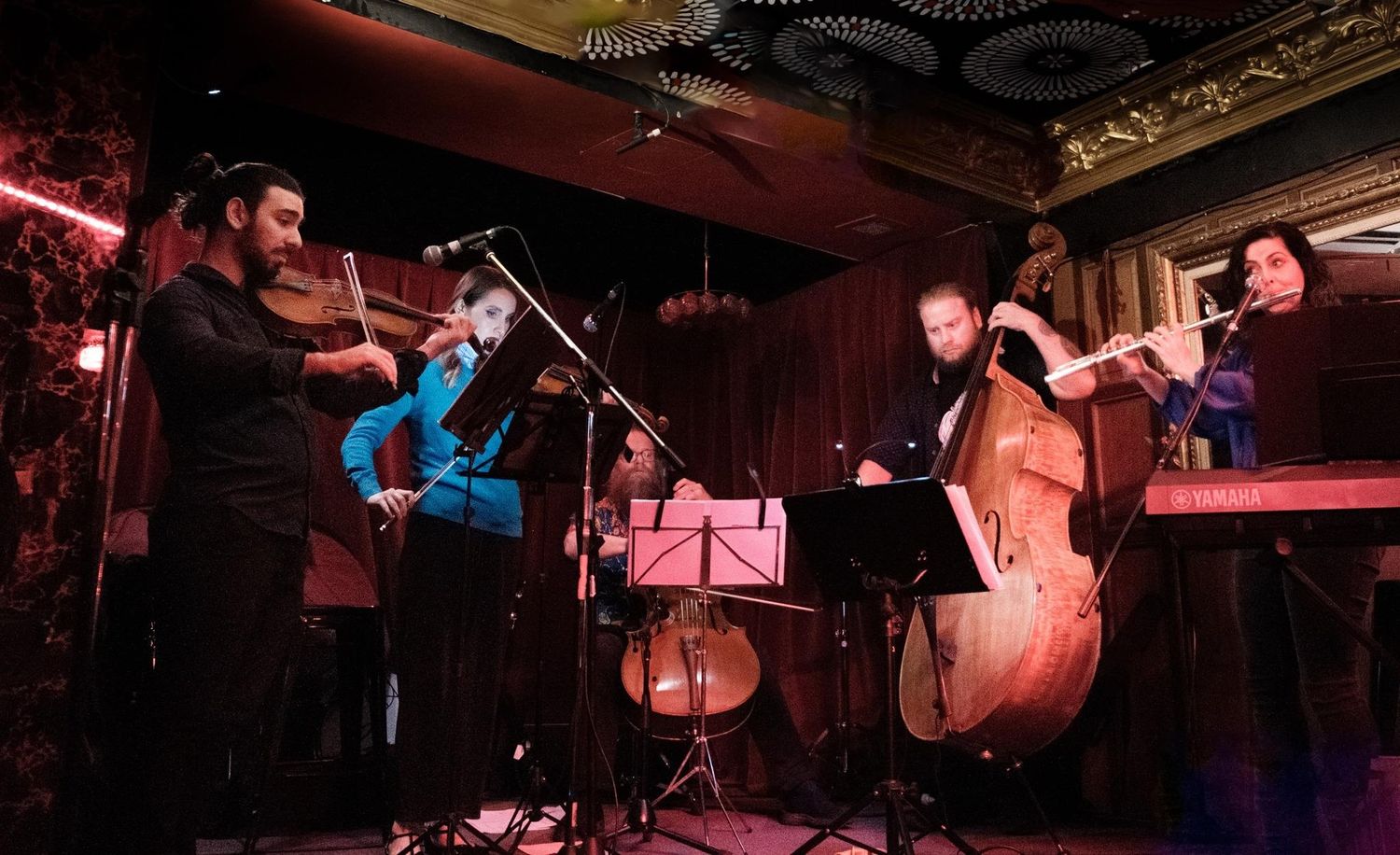Home>Events & Info>Chamber Music>What Instruments Are Included In Chamber Music?


Chamber Music
What Instruments Are Included In Chamber Music?
Modified: January 22, 2024
Discover the captivating world of Chamber Music and explore the variety of instruments used in this enchanting genre.
(Many of the links in this article redirect to a specific reviewed product. Your purchase of these products through affiliate links helps to generate commission for AudioLover.com, at no extra cost. Learn more)
Table of Contents
Introduction
Welcome to the fascinating world of chamber music! As an art form that has captivated audiences for centuries, chamber music offers a unique listening experience that showcases the intimacy and virtuosity of small ensembles. In this article, we will explore the enchanting world of chamber music and delve into the various instruments that make up these extraordinary ensembles.
Chamber music is a genre of classical music that is performed by a small group of musicians, typically consisting of two to nine players. Unlike orchestral music, which features a large number of musicians playing different instruments, chamber music focuses on the interaction between individual musicians, allowing for intricate musical conversations and a remarkable level of expressiveness.
Chamber music performances are often held in intimate settings such as small halls, living rooms, or even historical venues. This close proximity between the musicians and the audience enhances the immersive experience, allowing listeners to fully appreciate the nuances, dynamics, and emotions conveyed by the performers.
Chamber music offers a diverse repertoire that encompasses various styles, time periods, and musical forms. From the elegant compositions of the Baroque era to the bold and innovative creations of contemporary composers, chamber music provides a rich tapestry of sonic exploration and artistic expression.
Throughout history, chamber music has been cherished by both musicians and music lovers alike. Its inherent intimacy allows for a deeper connection between performers and audience members, fostering a sense of camaraderie and shared musical experience.
In the following sections, we will explore the various instruments that are commonly found in chamber music ensembles. From the elegant and melodic strings to the vibrant and resonant brass, each instrument brings its unique timbre and character to the ensemble, creating a harmonious blend that is both captivating and enchanting.
Definition of Chamber Music
Chamber music is a genre of classical music that is characterized by its small ensemble size and intimate nature. Unlike orchestral music where numerous instruments are involved, chamber music typically consists of two to nine musicians, allowing for a more personal and collaborative musical experience.
The term “chamber” refers to a room in which these performances were originally held. This intimate setting allowed for clearer acoustics and closer interaction between the musicians and the audience.
One of the defining features of chamber music is that each instrument has its independent voice and contributes to the overall musical conversation. The musicians work together closely, blending their individual skills and interpretations to create a unified and harmonious performance.
Chamber music can be performed by a variety of instrument combinations, including string quartets, piano trios, woodwind quintets, and brass ensembles, among others. The specific instrumentation depends on the particular composition being performed.
Another characteristic of chamber music is its diverse repertoire. Compositions can span various time periods, from the works of famous Baroque composers such as Bach and Vivaldi to modern-day compositions by living composers.
Chamber music also offers a wide range of musical forms and styles, including sonatas, quartets, trios, and quintets. These compositions often showcase the technical prowess and musicality of the musicians, allowing for expressive interpretations and intricate musical dialogues.
One of the joys of chamber music lies in its collaborative nature. Musicians must actively listen and respond to one another, creating a fluid and cohesive performance. This level of interaction and synchronization requires a deep understanding of the music and a strong sense of communication between the ensemble members.
Overall, chamber music is a genre that celebrates the art of collaboration, allowing musicians to showcase their individual talents while creating a unified and profound musical experience. Its intimate and personal nature invites listeners to immerse themselves in the intricate musical conversations and experience the beauty of this extraordinary genre.
Historical Background
The origins of chamber music can be traced back to the 17th century in Europe, primarily in Italy and Germany. During this period, the aristocracy and wealthy patrons supported music as a means of entertainment and socializing.
Initially, chamber music was performed in small private chambers or salons, hence the name. These intimate gatherings allowed for a more personal musical experience and encouraged close interaction between the musicians and the audience.
One of the earliest forms of chamber music was the trio sonata, which consisted of two melodic instruments, typically violins, and a continuo section, which included a keyboard instrument and a bass instrument. The trio sonata became a popular form of entertainment during the Baroque period, with composers such as Arcangelo Corelli and Antonio Vivaldi contributing to its development.
As the Classical era unfolded in the 18th century, chamber music started to take on new forms and instrumentation. The string quartet emerged as a dominant genre, featuring two violins, a viola, and a cello. This ensemble allowed for a rich and balanced musical texture, with each instrument playing a unique role in the composition.
Composers such as Franz Joseph Haydn, Wolfgang Amadeus Mozart, and Ludwig van Beethoven made significant contributions to the development and popularization of chamber music during this era. Their compositions showcased the expressive potential of the genre, blending technical mastery with emotional depth.
In the 19th century, the Romantic era brought further innovations to chamber music. Composers like Felix Mendelssohn, Robert Schumann, and Johannes Brahms expanded the repertoire with their emotionally charged compositions. The piano also began to play a more prominent role in chamber music, leading to the formation of piano trios and piano quartets.
As the 20th century dawned, chamber music continued to evolve and adapt, reflecting the changing musical landscape. Composers such as Igor Stravinsky, Béla Bartók, and Benjamin Britten experimented with new harmonies and forms, pushing the boundaries of traditional chamber music.
Today, chamber music remains a vibrant and cherished genre. It continues to captivate audiences around the world, with ensembles ranging from string quartets to mixed instrumentation groups exploring a wide range of styles and compositions.
The historical development of chamber music reveals its enduring appeal and timeless beauty. From its humble beginnings in intimate chambers to its present-day diversification, chamber music stands as a testament to the power of collaboration and the profound impact of small ensembles on the world of classical music.
String Instruments
String instruments play a crucial role in chamber music, providing a foundation of rich and resonant sound. These instruments are known for their versatility, expressive capabilities, and ability to create a wide range of tones.
The most commonly used string instruments in chamber music ensembles are the violin, viola, cello, and double bass. Each instrument brings its unique timbre and character, contributing to the dynamic interplay and harmony of the ensemble.
The violin, with its soaring and lyrical qualities, is often considered the king of string instruments. Its expressive capabilities make it well-suited for carrying melodies and providing virtuosic passages. In chamber music, the violin often takes a leading role, with its vibrant sound cutting through the texture of the ensemble.
The viola, slightly larger than the violin, has a darker and warmer tone. It often plays a supporting role, providing a rich harmonic foundation and adding depth to the ensemble’s sound. The viola’s unique voice adds a layer of richness and complexity to chamber music performances.
The cello, the largest member of the string family, possesses a deep and sonorous tone. Its expressive range can span from melancholic and soul-stirring melodies to powerful and resonant bass lines. The cello often takes on a prominent role in chamber music, providing beautiful melodies and grounding the ensemble with its rich low-end sound.
The double bass, the largest and lowest-pitched instrument in the string family, adds depth and substance to chamber music ensembles. Its deep, resonant sound provides a solid foundation in the lower register, creating a sense of stability and anchoring the harmonic structure of the ensemble.
String instruments in chamber music possess an exceptional level of expressiveness and are capable of conveying a wide range of emotions. Their versatility allows for intricate conversations and harmonious blending, creating a magical and captivating musical experience.
Chamber music compositions often showcase the technical prowess and musicality of string players, with performances that highlight their ability to navigate intricate melodies, execute challenging passages, and bring out the subtleties of the music.
Whether it is the delicate and ethereal sound of the violin, the warm and resonant tone of the viola, the soul-stirring melodies of the cello, or the solid grounding of the double bass, the string instruments are at the heart of chamber music, bringing beauty, complexity, and emotional depth to every performance.
Woodwind Instruments
Woodwind instruments add a unique and colorful element to chamber music ensembles. With their diverse range of tones and expressive capabilities, these instruments bring a vibrant and dynamic quality to the overall musical texture.
The woodwind family in chamber music includes instruments such as the flute, oboe, clarinet, and bassoon. Each instrument has its distinctive sound, allowing for a rich combination of timbres and textures within the ensemble.
The flute, known for its fluid and lyrical voice, offers a bright and airy sound. It can effortlessly glide through melodic lines and add a sparkling touch to chamber music performances. The flute’s agility and versatility make it an indispensable instrument in many chamber music compositions.
The oboe, with its distinct reedy sound, possesses a rich and expressive tone. It has a penetrating voice, which often gives it melodic and soloistic roles in chamber music ensembles. The oboe’s unique timbre adds depth and emotional depth to the overall sound of the ensemble.
The clarinet, with its smooth and versatile voice, brings warmth and a wide tonal range to chamber music performances. Its ability to produce both lyrical melodies and nimble virtuosic passages adds a dynamic and expressive dimension to the ensemble. The clarinet’s clarion and mellower tones make it a valuable asset in the woodwind section.
The bassoon, with its rich and deep resonance, adds a strong foundational sound to chamber music ensembles. Its dark and expressive voice provides a solid bassline or adds depth to the harmonies, creating a strong sense of stability in the ensemble’s sound. The bassoon’s distinctive timbre adds a unique color and depth to the ensemble.
Woodwind instruments in chamber music add nuance, expression, and tonal variety. They often engage in dialogue with other instruments, blending their unique voices to create a captivating musical conversation. The combination of woodwind instruments with other instrument families adds contrasting colors and textures, resulting in a harmonious and balanced ensemble.
Chamber music compositions often showcase the technical abilities of woodwind players, with passages that highlight their ability to navigate intricate melodies, execute rapid passages, and seamlessly blend with other instruments.
Whether it is the delicate and ethereal sound of the flute, the expressive and reedy tones of the oboe, the warm and versatile voice of the clarinet, or the resonant depths of the bassoon, woodwind instruments bring a remarkable array of colors and expressions to chamber music, creating a truly enchanting and diverse musical experience.
Brass Instruments
Brass instruments add a powerful and majestic element to chamber music ensembles. With their bold and resonant tones, these instruments bring an exciting and vibrant quality to the overall sound.
The brass family in chamber music includes instruments such as the trumpet, horn, trombone, and tuba. Each instrument has its distinct timbre and range, allowing for a diverse combination of sounds within the ensemble.
The trumpet, known for its bright and piercing sound, brings brilliance and agility to chamber music performances. Its ability to play soaring melodies and execute virtuosic passages adds a dynamic and expressive dimension to the ensemble. The trumpet’s commanding presence often takes on melodic and soloistic roles, creating a powerful impact within the ensemble.
The horn, with its warm and mellow voice, possesses a rich and expressive tone. It has a wide range and can evoke a variety of moods, ranging from lyrical and tender to bold and triumphant. The horn’s ability to blend with other instruments and its distinctive tonal quality make it a versatile and valued member of chamber music ensembles.
The trombone, with its smooth and deep resonance, adds a unique and robust flavor to chamber music performances. Its ability to produce both sonorous and agile passages adds depth, power, and versatility to the ensemble’s sound. The trombone’s distinctive timbre adds richness and warmth to the ensemble, often providing a strong bassline or enhancing the harmonic structure.
The tuba, the largest and deepest instrument in the brass family, brings a solid and resonant foundation to chamber music ensembles. Its deep and powerful tone adds weight and stability to the lowest register, creating a strong sense of grounding and solidity in the ensemble’s sound. The tuba’s rich and enveloping sound enriches the overall texture and adds a majestic quality to the performance.
Brass instruments in chamber music contribute excitement, brilliance, and a full-bodied sound. They often play a significant role in fanfares, triumphant passages, and dramatic moments within compositions. The combination of brass instruments with other instrument families adds contrast and grandeur, creating a captivating and robust musical experience.
Chamber music compositions often showcase the technical skills of brass players, with passages that highlight their ability to navigate demanding ranges, execute rapid passages, and blend seamlessly with other instruments.
Whether it is the vibrant and resounding sound of the trumpet, the warm and versatile tones of the horn, the smooth and agile passages of the trombone, or the deep and resonant notes of the tuba, brass instruments bring a powerful and majestic presence to chamber music, elevating the overall performance to new heights.
Keyboard Instruments
Keyboard instruments play an essential role in chamber music, providing harmonic support, melodic lines, and intricate musical textures. These versatile instruments allow for a wide range of expressions and add depth and complexity to chamber music ensembles.
The main keyboard instruments used in chamber music are the piano and the harpsichord. Both instruments have distinct sounds and capabilities, offering unique contributions to the overall texture of the ensemble.
The piano, with its ability to produce a wide dynamic range and a rich palette of tonal colors, is often a centerpiece of chamber music performances. Its expressive capabilities and versatile nature make it a highly valued instrument. The piano can play both soloistic and accompaniment roles, providing a solid harmonic foundation and adding melodic flourishes to the ensemble. Its ability to play multiple voices simultaneously allows for intricate counterpoint and complex musical interactions.
The harpsichord, with its plucked-string mechanism, has a distinctive, vibrant sound. It was widely used during the Baroque era and continues to be employed in performances of Baroque and early Classical period music. The harpsichord’s unique timbre and its ability to produce vibrant ornamentation adds a touch of authenticity and historical flavor to chamber music performances.
Both keyboard instruments require a high level of technical proficiency, as they often handle intricate passages, complex chord progressions, and nuanced dynamics within chamber music compositions. Keyboard players bring their interpretive skills and musical sensitivity to communicate the composer’s intentions, shaping the phrasing and articulation of the music.
Keyboard instruments in chamber music provide harmonic support, tonal richness, and intricate musical interplay. Composers often utilize them to explore complex textures, create harmonic tension and release, and add melodic depth to the ensemble’s overall sound.
Whether it is the grand and expressive sound of the piano or the distinct and vibrant timbre of the harpsichord, keyboard instruments bring a unique and captivating element to chamber music, enriching the performance with their versatility, tonal colors, and harmonic grounding.
Percussion Instruments
Percussion instruments add rhythm, texture, and dynamic energy to chamber music ensembles. With their wide variety of sounds and distinct timbres, these instruments provide a rhythmic foundation and contribute to the overall musical spirit.
The percussion family in chamber music includes instruments such as the timpani, snare drum, cymbals, tambourine, and triangle, among others. Each instrument brings its unique character and adds a different flavor to the ensemble’s sound.
The timpani, also known as kettle drums, are large drums with a range of pitches. They create a deep and resonant sound, bringing a majestic and dramatic quality to chamber music performances. The timpani provide rhythmic support, emphasize climactic moments, and add a sense of grandeur to the overall sound.
The snare drum, with its distinctive cracking sound, adds a crisp and percussive element to chamber music ensembles. It provides rhythmic punctuation, driving the momentum of the composition. The snare drum’s sharp and staccato articulation adds excitement and rhythmic intensity to the overall texture.
Cymbals, with their crashing and shimmering sound, add a vibrant and expansive quality to chamber music performances. They often mark climactic moments, add accents, and create a sense of drama. Cymbals contribute to the overall rhythmic texture and provide a dynamic percussive element.
The tambourine, with its jingling and shaking sound, adds a lively and rhythmic presence to chamber music ensembles. It provides a percussive accompaniment, often accentuating the rhythmic pulse or adding a joyful and festive quality to the music. The tambourine’s vibrant and expressive sound enhances the rhythmic drive and adds a sense of celebration.
The triangle, with its shimmering and tinkling sound, adds a delicate and crystalline element to chamber music performances. It provides melodic accents, punctuates phrases, and adds a subtle, high-pitched sparkle to the overall texture. The triangle’s clear and penetrating sound enhances the rhythmic intricacy and adds a touch of brilliance.
Percussion instruments in chamber music offer rhythmic support, textural depth, and expressive accents. Their presence adds excitement, diversity, and a sense of rhythmic vitality to the ensemble. Percussionists bring their expertise in rhythm and musicality to create intricate and precise performances.
Whether it is the majestic resonance of the timpani, the crisp articulation of the snare drum, the shimmering sound of the cymbals, the lively jingles of the tambourine, or the delicate notes of the triangle, percussion instruments provide a dynamic and vibrant presence in chamber music, enriching the overall musical experience.
Vocal Instruments
Vocal instruments, including solo singers and choirs, bring the human voice into the realm of chamber music. With their ability to convey emotion, tell stories, and evoke deep feelings, these instruments add a powerful and intimate element to the ensemble.
The voice is a versatile and expressive instrument that can convey a wide range of emotions. In chamber music, solo singers and vocal ensembles often take on melodic and lyrical roles, delivering captivating performances of songs, arias, and vocal compositions.
The human voice possesses a unique timbre and tonal quality, reflecting the individuality and expressiveness of each vocalist. From the rich and resonant bass voices to the soaring and agile sopranos, vocalists bring a diversity of sound and color to chamber music performances.
With their ability to convey lyrics and text, vocal instruments add an additional layer of storytelling and meaning to chamber music compositions. Singers express the nuances of the lyrics, infusing them with emotions and connecting with the audience on a profound level.
In chamber music, vocal instruments often interact with other instrumentalists, engaging in musical dialogues and creating intricate harmonies. The interplay between the voice and other instruments can be deeply moving, creating moments of both tender intimacy and powerful expression.
Chamber music compositions for vocal instruments encompass a wide range of styles and genres, from art songs and lieder to vocal chamber music and choral works. These compositions highlight the unique capabilities and expressive potential of the voice.
Whether it is the solo voice, offering an intimate and personal performance, or a vocal ensemble, bringing a powerful collective sound, vocal instruments add a deeply human and emotional element to chamber music. They contribute to the overall texture, evoking a wide range of feelings and connecting with listeners on a profound level.
Vocalists bring their interpretive skills, technical abilities, and artistry to chamber music performances. Through their voices, they communicate the intended emotions, tell stories, and bring the composer’s vision to life.
With their ability to move and inspire, vocal instruments in chamber music create moments of soul-stirring beauty, conveying the power and vulnerability of the human spirit.
Conclusion
Chamber music is a captivating and enchanting genre that showcases the beauty of small ensembles and the interplay between musicians. From the elegant and melodious strings to the vibrant brass, the expressive woodwinds, the versatile keyboards, the rhythmic percussion, and the evocative vocal instruments, each instrument brings its unique timbre and character to create a rich and diverse musical tapestry.
Chamber music offers a truly immersive and intimate listening experience, allowing audiences to witness the musical dialogue and artistic collaboration between musicians. The close proximity between performers and listeners creates a connection that enhances the emotional impact of the music.
Throughout history, chamber music has evolved and adapted, embracing various styles, time periods, and musical forms. It reflects the cultural and artistic development of different eras, from the Baroque and Classical periods to the contemporary compositions of today.
Chamber music’s enduring popularity is a testament to its ability to engage and captivate audiences. Its unique characteristics, such as the emphasis on individual voices, collaborative interaction, and the exploration of intricate musical conversations, set it apart from other genres of classical music.
Whether performed by a string quartet, a woodwind quintet, a brass ensemble, or a mixed instrumentation group, chamber music continues to enchant and inspire with its depth, complexity, and emotional resonance.
As you explore the world of chamber music, take the time to listen attentively, appreciating the interplay of the instruments and the intricate musical conversations. Discover the extraordinary beauty and power that can emerge from the collaboration of talented musicians, as they bring these remarkable compositions to life.
So, immerse yourself in the enchanting world of chamber music, and let the harmonies, melodies, and emotions transport you to a place of musical wonder and artistic expression.

